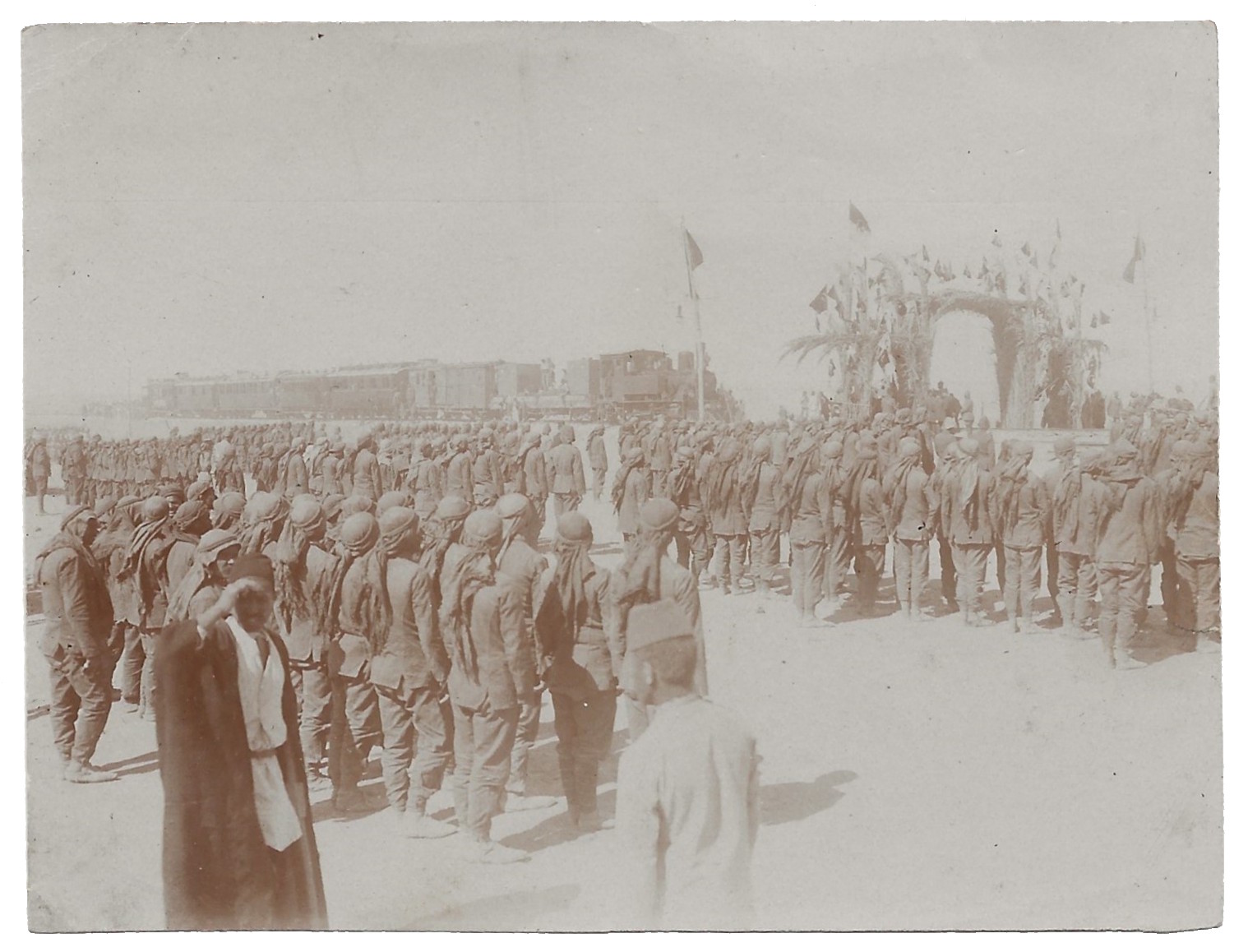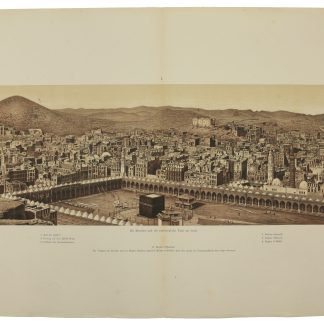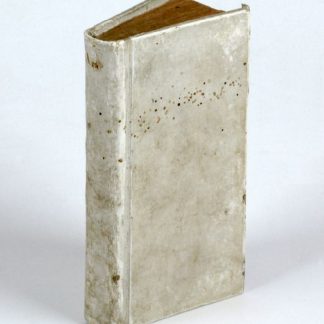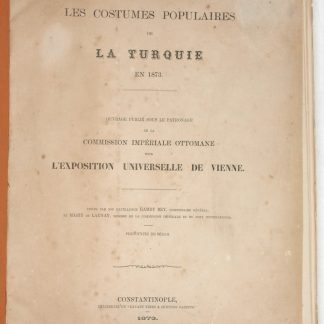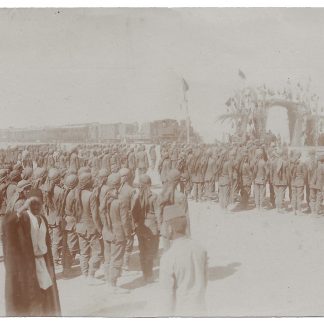A new station on the Hejaz Railway
[Original photograph of the Hejaz Railway, likely depicting an opening ceremony for a new station along the line].
2 albumen photographs, 90 x 110 and 110 x 150 mm. With partially erased old pencil inscription in Turkish to verso.
€ 2,500.00
A fascinating original photograph of a ceremony in honour of the opening of a new station along the line of the Hejaz Railway, featuring a detachment of the Ottoman "Arab Infantry" greeting a train pulled by a tank engine (likely an early Krauss tank engine, built for the Hejaz Railway by the Krauss Locomotive Works based in Munich and Linz) as it arrives at an arch of garlands. Next to the train is a stage for the hosting dignitaries. A second photograph shows locals alongside a stretch of track.
Though the specific year and location is unclear, similar ceremonies were held whenever a new stretch of track was completed, and often featured Ottoman or German dignitaries in charge of the development of the Hejaz railway, such as its chief engineer, Mouktar Bey, who was photographed at a similar ceremony in Medina in 1908.
The Hejaz Railway became a focal point of the pan-Muslim policy pursued by Sultan Abdul Hamid II (1842-1918) in the years leading up to the First World War, and the project was famously funded in part by Muslim donations. The railway ran 1,300 kilometres from Damascus to Medina, with a branch line to Haifa on the Mediterranean Sea. Its aim was twofold: first, to connect Istanbul to the religious centres at Mecca and Medina (though it achieved only the latter), and second, to facilitate Ottoman troop movements through Arabian holdings. Due in part to these military aims, the Hejaz Railway became a major target during the Arab Revolt, and T. E. Lawrence himself attacked it with some success.
Gentle fading, light edgewear; very good.

